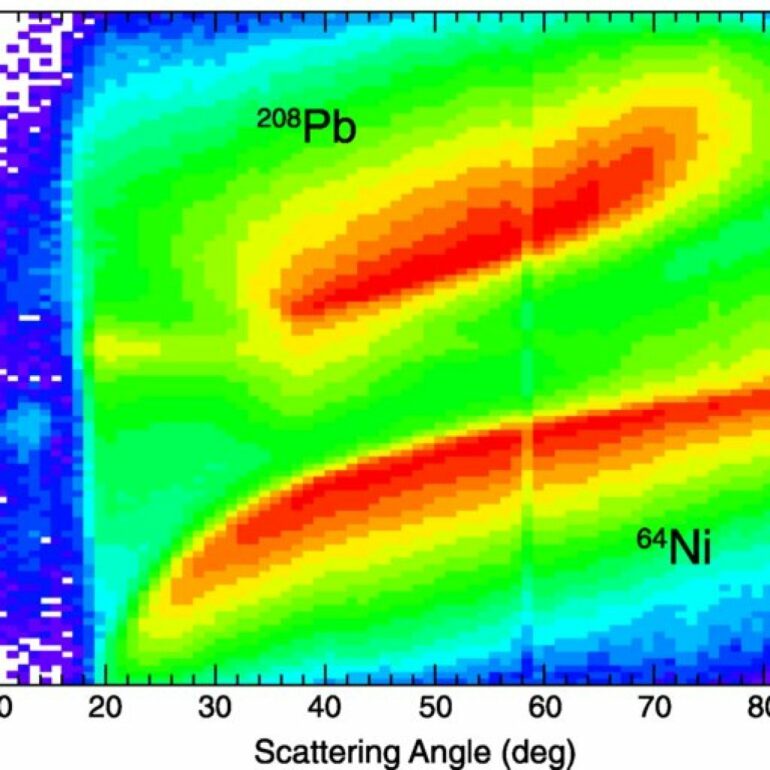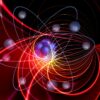A new paper sheds light on the nature of atomic nuclei. The study is published in the journal Physical Review C.
Everything in the universe, from the largest galaxies down to individual atoms, is governed by four fundamental forces, which together describe how particles interact with each other and make up the world as we know it. These include the electromagnetic force, gravity, and the weak and strong nuclear forces.
After a recent study at the U.S. Department of Energy’s (DOE) Argonne National Laboratory and the University of North Carolina at Chapel Hill, researchers are one step closer to understanding the strong nuclear force, one of the most mysterious of the forces.
“More than 50% of the medical procedures in hospitals today involve nuclear isotopes. And most of these isotopes have been discovered while doing fundamental research like we are doing,” said Robert Janssens, a professor at UNC-Chapel Hill and co-author of the paper.
Their work builds on foundational theories of atomic structures that originated with Argonne physicist and Nobel Prize winner Maria Goeppert Mayer in the early 1960s. She helped develop a mathematical model for the structure of nuclei. Her model explained why certain numbers of protons and neutrons in the nucleus of an atom cause it to be extremely stable—a phenomenon that had baffled scientists for some time.
The research team previously conducted similar experiments to study the strong nuclear force by examining how the structure of a nucleus can change when it is produced in an excited state through a nuclear reaction. These and other experiments done elsewhere led them to investigate nickel-64, which has 64 neutrons and protons. This nucleus is the heaviest stable nickel nucleus, with 28 protons and 36 neutrons. This nickel isotope has properties that allow its structure to change when it is excited to higher energy states.
For their experiment, the team used the Argonne Tandem Linac Accelerator System, a DOE Office of Science user facility, to accelerate a sample of Ni-64 nuclei toward a target of lead. The lead atoms were able to excite the Ni-64 nuclei through the electromagnetic forces resulting from the repulsion between the protons in lead and the protons in nickel.
The process looks similar to putting a bag of popcorn in the microwave. As the kernels warm up, they begin to pop into all different shapes and sizes. The popcorn that comes out of the microwave will be different than what went in, and crucially, the kernels will have changed their shape due to the energy exerted upon them.
After the Ni-64 nuclei were excited, an instrument called GRETINA detected the gamma rays released when the nuclei decayed back to their ground state. Another detector named CHICO2 determined the direction of the particles involved in the interaction. The data obtained by the detectors allowed the team to determine what shape—or shapes—the Ni-64 took as it was excited.
From the analysis of the data, it was concluded that the Ni-64 nuclei excited by interactions with lead also changed their shape. But instead of popping into familiar fluffy shapes, the nickel’s spherical atomic nucleus changed into one of two shapes depending on the amount of energy exerted on it: oblate, like a doorknob, or prolate, like a football. This finding is unusual for heavy nuclei like Ni-64, which consist of many protons and neutrons.
“A model is a picture of reality and it’s only a valid model if it can explain what was known before, and it has some predictive power,” said Prof. Janssens. “We are studying the nature and behavior of nuclei to continuously improve our current models of the strong nuclear force.”
Ultimately, the researchers hope their findings in Ni-64 and surrounding nuclei can lay the foundations for future practical discoveries in the nuclear science field, such as nuclear energy, astrophysics and medicine.
More information:
D. Little et al, Multistep Coulomb excitation of Ni64 : Shape coexistence and nature of low-spin excitations, Physical Review C (2022). DOI: 10.1103/PhysRevC.106.044313
Provided by
Argonne National Laboratory
Citation:
Nuclear popcorn: Heavy nucleus changes shapes at different energies (2022, November 30)



